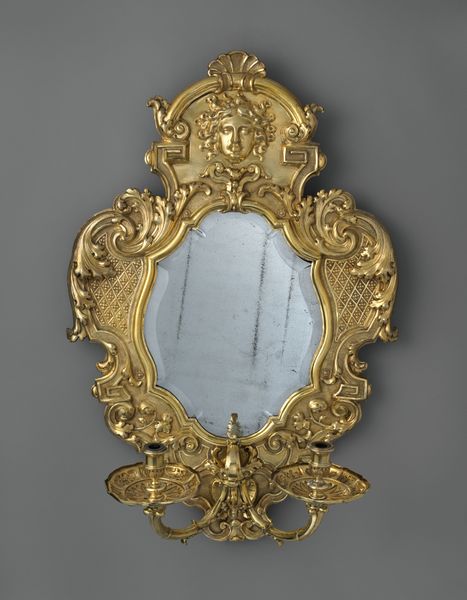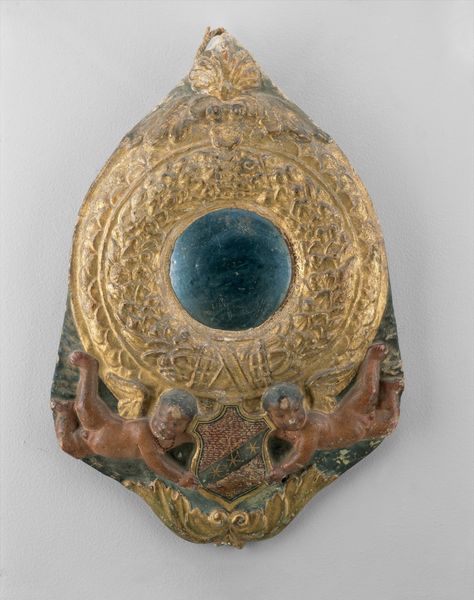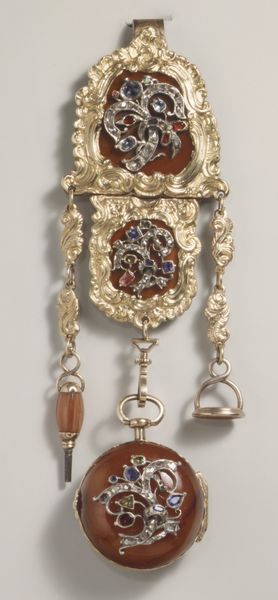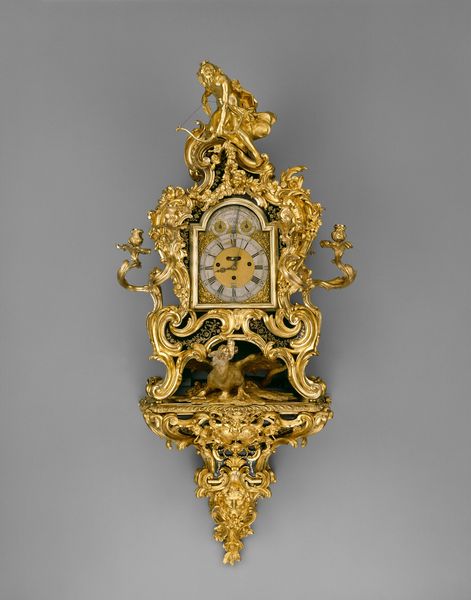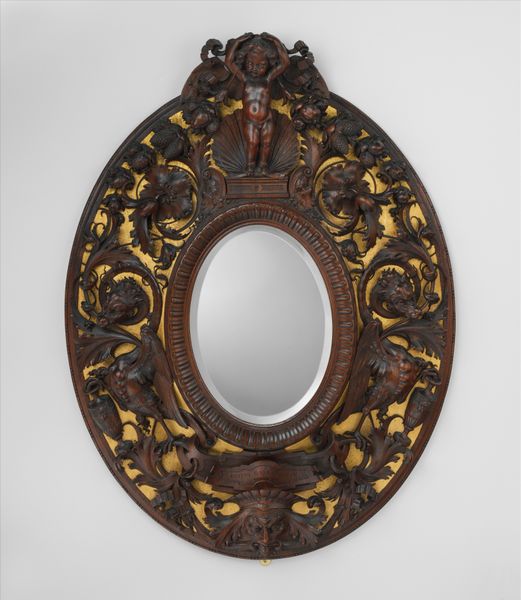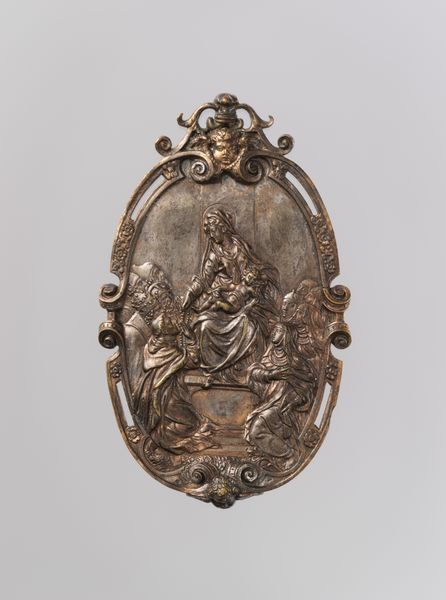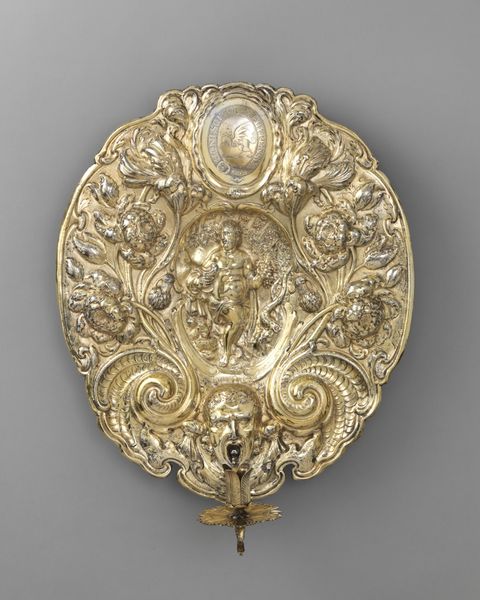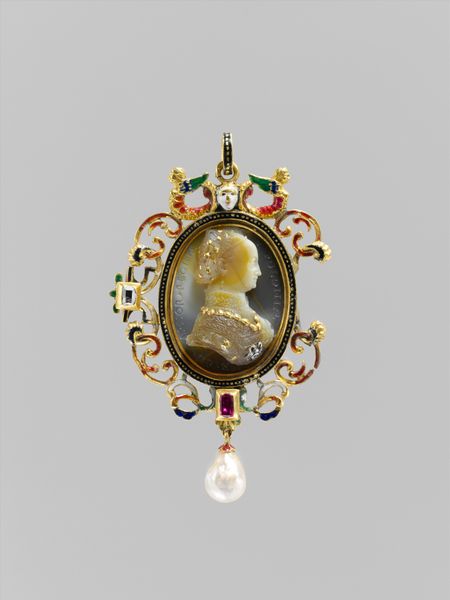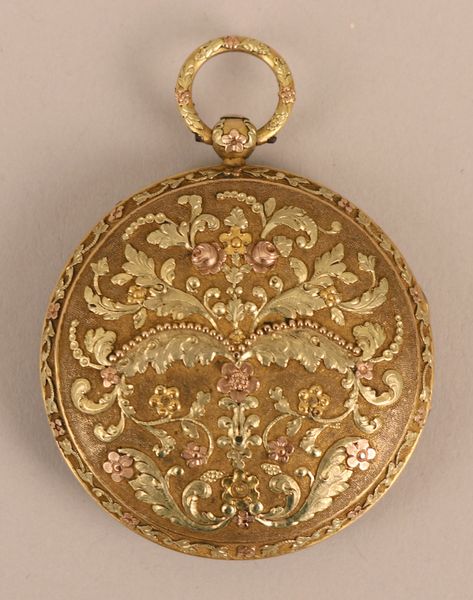
carving, guilding, sculpture, wood
#
carving
#
sculpture
#
guilding
#
sculpture
#
wood
#
decorative-art
#
italian-renaissance
Dimensions: Overall: 24 1/4 × 14 3/16 in. (61.6 × 36 cm) Diameter (Sight): 6 in. (15.2 cm) Diameter (Rebate): 7 1/16 in. (17.9 cm)
Copyright: Public Domain
Editor: So, this is an Italian Renaissance mirror frame, a "Tondo mirror frame" made by an artist from Siena between 1487 and 1503. The frame is made of carved and gilded wood. It has this deep blue reflective surface in the middle, and it looks surprisingly weighty. What do you make of its function in Renaissance society? Curator: It’s tempting to view this purely as a decorative object, reflecting wealth and status through its materials and craftsmanship. However, I think it reflects something deeper. In Renaissance society, mirrors carried complex cultural weight beyond vanity. How might we interpret the gaze that this object facilitates? Editor: That's interesting... I hadn’t thought about the act of looking being loaded in that period. Were mirrors common then? Curator: Not at all! They were luxury items. Think about the social dynamics at play. Who had access to self-representation and the power that came with it? Was it primarily men of a certain class, gazing at themselves? And if so, what was that experience really communicating? This era placed new importance on individual agency, with implications around masculine power. Editor: So the mirror becomes this tool to promote their individual and class identity. What about those small angelic figures, their place within this structure of power and self-fashioning? Curator: Exactly. And those putti or angels aren’t innocent decorations. They subtly reinforce the prevailing power structures and gender roles, almost legitimizing that singular gaze. Who got to participate and who didn’t? Editor: It’s wild to think about the everyday object of a mirror having that kind of layered context! I am definitely rethinking its symbolism beyond its material worth. Curator: Right. Recognizing how objects reinforce power relations in different eras really invites us to be more mindful consumers today.
Comments
No comments
Be the first to comment and join the conversation on the ultimate creative platform.
